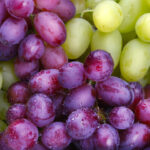Chilean grape industry pushes for financial assistance, productivity boost
Chile is well-known in the Northern Hemisphere for its counterseasonal table grapes, but at home the industry is in an important period of change. Around 40% of its production needs renewal to respond to growing Asian demand, especially with the opening of the Chinese market. At www.freshfruitportal.com we speak with several players involved in the push for change, with calls for government assistance to smoothen out the transition process. 
Financial figures from last year's Chilean grape season were far from memorable due to exchange rate challenges and increasing labor costs, which for some varieties reached 70% of total production expenditure.
National Agricultural Society (SNA) research manager Ema Budinich told www.freshfruitportal.com the industry faced problems with competitiveness, while in some regions weather factors have affected fruit quality and returns. Investment has taken a hit as a result.
"The loss in competitiveness for fruit in the last seven years between 2004 and 2011 was 39.7%, due to a fall in the exchange rate of 26.9% which offset better foreign prices which rose 26.6%; and at the same time strong rises in production costs of 53.5%," she said.
"The export growth for table grapes last season was mainly based on volume, as average returns fell."
"There was a scenario of growing uncertainty that halted investment in replacement and new projects too, except some very minor exceptions. In the case of table grapes in particular, the consequences without a shadow of a doubt have been the loss of orchards and higher indebtedness."
Budnich added that for many years it was believed the fall in the dollar would be temporary, but the situation got worse and led to losses, particularly for varieties with high labor costs like Thompson grapes. Growers whose vines had low yields due to age or their design also suffered.
"In 2006 the experts said the dollar would balance out over the long term at CLP$600 for Chile, so it was thought that it was a thing of enduring a bad streak, and there were people who made investments with this exchange rate.
"The renewal of orchards is imminent and demands a high investment effort, not just for the cost of planting new orchards, of some US$20,000-30,000 per hectare, but also that working capital has to be invested in their development, expecting that it will be three to four years without income before the orchards start to bear their fruit."
The dilemma of renewal without capital
Fedefruta president Antonio Walker said around 40% of Chile's table grape farms have productivity problems.
"It's decapitalized, which is a product of an exchange rate that has squeezed us for a long time, while table grapes haven't had spectacular prices either," he said.
"The credit that has been offered is under conditions that haven't been adjusted to this reality, with excess collateral, periods and insufficient grace years. This is affecting the viability of many growers, especially the smallest ones."
Fedefruta has called on Agricultural Minister Jose Antonio Galilea for long term financing of 20 years and a three-year grace period, with two objectives for the industry: to be able to restructure debt and renew orchards. To help achieve this there have been round table talks over agricultural competitiveness, and a study to quantify the problem more precisely.
"We can't compete with an old machine, we have to do it with the latest model."
Despite the challenges, Walker pointed to an improvement in prices last year which reduced the damage.
"But the costs that arrived to stay, and the way prices went up and down, was very dangerous, and that's why we have spoken so much about the importance of a stable and competitive exchange rate.
"You shouldn't be dazzled by prices, because what's important is profitability, the final equation, it's not just the price."
Season forecasts
While profitability continues to be a problem, Walker is upbeat about opportunities in Asia this season.
"We are relatively optimistic. We see that table grapes are going to be a competitive product, with the opening of China and the demand in Asia. Chile knows the product well, it's our main specie.
"We have 62,000 hectares of table grapes, we estimate that Red Globes and Crimsons will be the varieties that go well, and sultanas that are in areas with good yields too."
How can producers be protected this season?
Budinich added that producers need to hedge their options if they are to get by this season and years to come.
"For Thompson grape growers in particular, what saved them was having oriented their production to dried fruit, raisins or wine," she said.
Compañía Frutera del Norte president Isaac Bon, told www.freshfruitportal.com growers needed insurance too, adding that they have to "emphasize training of middle managers who are the link with workers, for a better efficiency at the farm level".
"The strength of a great productive center lies with the middle managers," he said.
"For the future we should need to be thinking of a change in varieties. We are focusing on Crimsons and Red Globes and our main market which is the United States is increasing the supply with varieties that are less demanding in cultural work and have higher yields per hectare.
He said vine management and grape arbor practices also had to change.
"What is done in Mexico is perfectly applicable in Chile, given the fact that the average height of our workers obliges them to work under the grape arbor above a foot path.
For Walker, it is important that support measures are taken quickly.
"Table grapes have a lot of demand. We are very optimistic for the future of this fruit, but we need grape arbors that are highly productive and of very good yield and quality."
Related story: Chilean grapes need momentum to drive season, says Fisher Capespan exec
















































